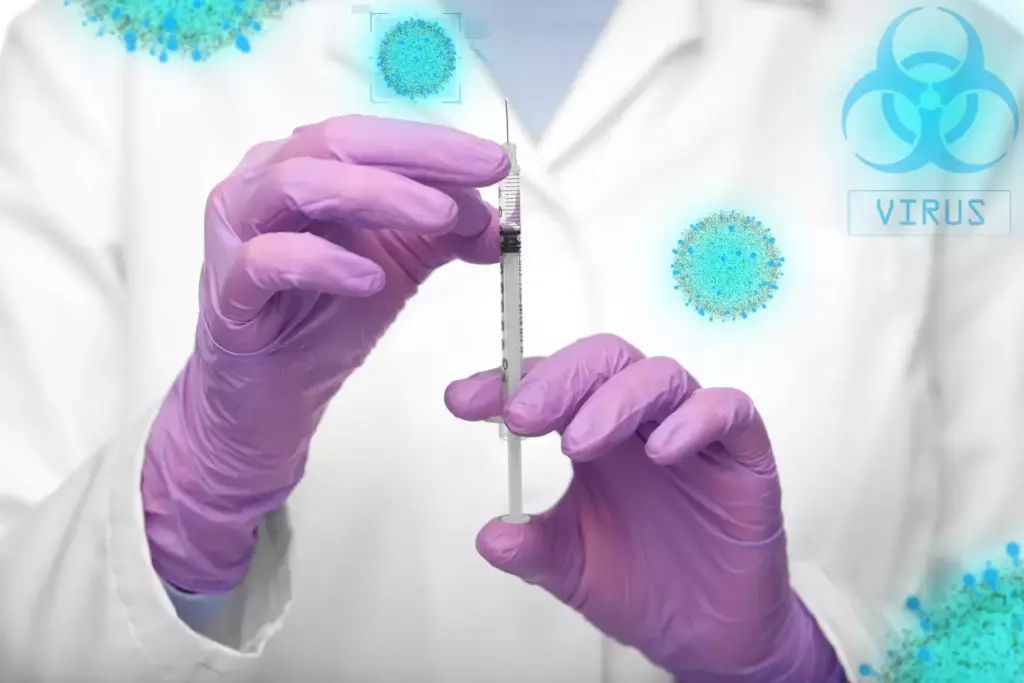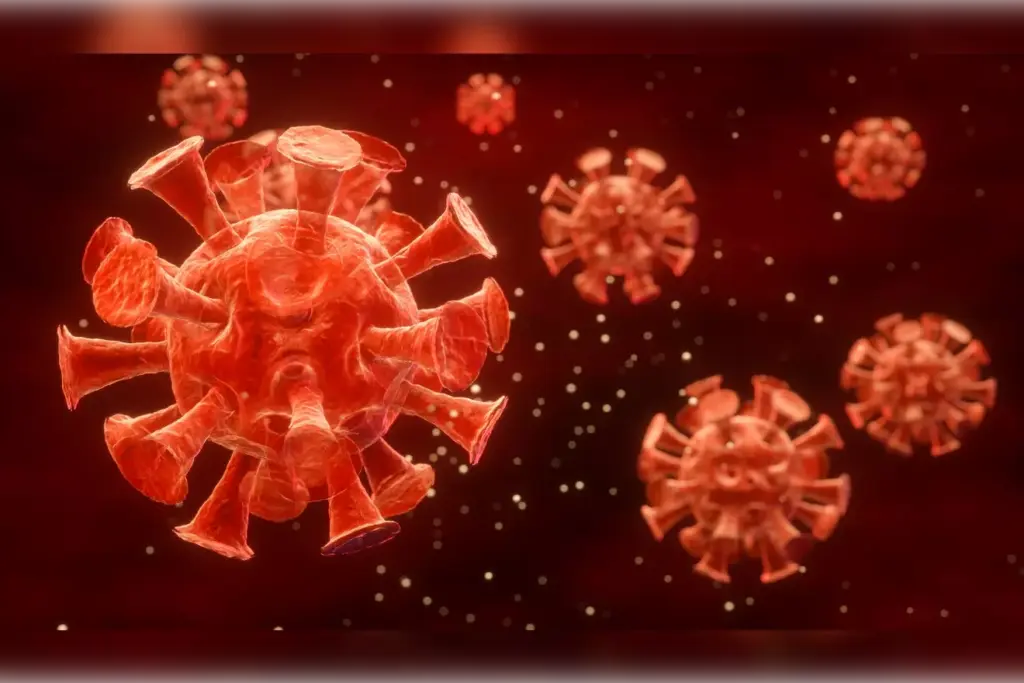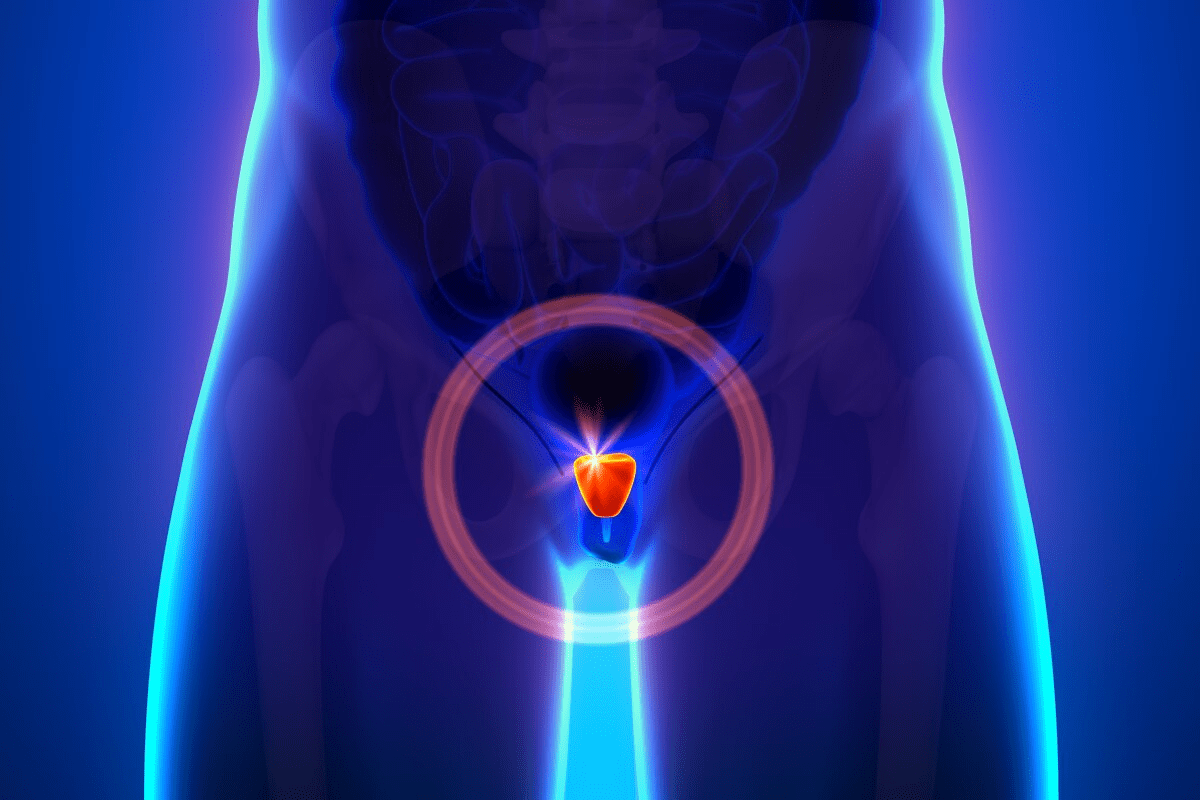Last Updated on November 26, 2025 by Bilal Hasdemir

Our immune system is made up of many cell types, each with its own role. Antibody production is key to fighting infections and diseases. Knowing which cells produce antibodies is essential.
Recent studies show that T cells and B cells work together to defend us. While T cells lead the immune response, B lymphocytes are the ones that actually produce antibodies. This is key to understanding how we fight off diseases.
At Liv Hospital, we focus on top-notch healthcare by studying the immune system. Our care is patient-centered, making sure it’s both effective and caring.
Key Takeaways
- B lymphocytes are responsible for producing antibodies.
- T cells play a supporting role in orchestrating the immune response.
- The partnership between T cells and B cells is vital for effective immune defense.
- Understanding the roles of different cell types is vital for developing effective treatments.
- Antibody production is a tightly regulated process central to adaptive immunity.
The Fundamentals of Antibody Production
The immune system makes antibodies to fight off diseases. These Y-shaped proteins are key to our defense. They find and stick to specific invaders, helping to get rid of them.
What Are Antibodies and Why Are They Important?
Antibodies are vital for our immune system. They help us fight off infections. They work by:
- Recognizing and binding to specific invaders
- Neutralizing pathogens by blocking their entry into host cells
- Marking pathogens for destruction through mechanisms like complement activation and antibody-dependent cellular cytotoxicity
Research shows antibodies are key in fighting off infections. They help protect us by neutralizing and marking pathogens for destruction.
The Immune System’s Antibody Production Process
Antibody production involves B cells, or B lymphocytes. When a B cell finds its specific antigen, it gets activated. This leads to it becoming a plasma cell, an antibody factory.
Plasma cells then make lots of antibodies. These antibodies are released into the bloodstream to fight the infection. T cells, like T helper cells (CD4+ T cells), help activate B cells and guide the immune response. The teamwork between B cells and T cells is key to a strong antibody response.
In short, knowing how antibodies are made helps us understand how our immune system works. It shows how important antibodies are and how B cells and T cells work together. This knowledge is vital for understanding how to support our immune system and fight off diseases.
B Lymphocytes: The Antibody Factories
Understanding B lymphocytes is key to knowing how our bodies make antibodies. B lymphocytes, or B cells, are a type of white blood cell. They play a big role in our immune system. They help fight off infections by producing antibodies.
Structure and Development of B Cells
B cells grow and mature in the bone marrow. This process has several stages. During this time, B cells go through genetic changes. This lets them recognize many different antigens.
How B Cells Recognize Antigens
B cells find antigens with their surface antibodies. When a B cell meets an antigen that matches its antibody, it gets activated. This is a key step in fighting off infections. It makes the B cell multiply and turn into plasma cells.
The Transformation into Plasma Cells
When activated, B cells turn into plasma cells. Plasma cells are like factories that make antibodies. They produce lots of antibodies specific to the antigen. This is important for our immune system to fight infections well.
Do T Cells Produce Antibodies? Understanding Their Role
B cells are famous for making antibodies, but T cells have a key role too. T cells are a type of lymphocyte that helps with cell-mediated immunity. They help control the immune response and support other cells, like B cells.
T Cell Structure and Development
T cells start from hematopoietic stem cells in the bone marrow. But they mature in the thymus. This is where they learn to tell self from non-self.
The T cells have a T cell receptor (TCR) on their surface. This is different from B cells’ antibodies. The TCR recognizes antigens presented by MHC molecules on other cells.
T Cell Receptors vs. Antibodies
T cell receptors and antibodies are both important for recognizing immune threats. But they work in different ways. Antibodies are proteins made by B cells that can directly bind to antigens. TCRs, on the other hand, need antigens to be processed and presented by MHC molecules to work.
| Characteristics | T Cell Receptors (TCRs) | Antibodies |
|---|---|---|
| Location | Membrane-bound on T cells | Soluble in bodily fluids |
| Antigen Recognition | Recognize processed antigens presented by MHC | Bind directly to antigens |
| Function | Activate T cells | Neutralize or mark antigens for destruction |
Why T Cells Don’t Directly Produce Antibodies
T cells don’t make antibodies because their main job is cell-mediated immunity. They help activate B cells and other immune responses. But, B cells, like plasma cells, are the ones that actually make antibodies.
T cells help B cells by releasing cytokines. These cytokines help B cells get activated and change into antibody-making cells. This teamwork between T cells and B cells is key for a strong immune response.
The Origin Story: Development of B and T Lymphocytes
B and T cells start from the same cells in our immune system. This shows how our immune response works together.
Common Lymphoid Progenitors
The story of B and T lymphocytes starts in the bone marrow. These cells are the first step to making all lymphocytes, including B and T cells. The process is complex, with many factors guiding it.
Studies reveal that choosing to be a B cell or T cell depends on certain genes and cytokines. For example, Pax5 is key for becoming a B cell.
B Cell Maturation in Bone Marrow
B cells mature in the bone marrow. This involves several important steps:
- Immunoglobulin gene rearrangement, making a unique B cell receptor for each B cell.
- Negative selection, removing B cells that attack self-antigens.
- Positive selection, keeping B cells with good B cell receptors.
After maturing, B cells leave the bone marrow. They then meet antigens and can become antibody-producing plasma cells.
T Cell Education in the Thymus
T cells go to the thymus for maturation, unlike B cells. The thymus is key for T cell development, helping with positive and negative selection.
T cell education in the thymus includes:
- T cell receptor (TCR) gene rearrangement, creating a diverse TCR repertoire.
- Positive selection, making sure T cells can recognize self-MHC molecules.
- Negative selection, removing T cells that react against self-antigens.
Only T cells that pass this test are released. They then help with cell-mediated immunity and support B cells.
The creation of B and T lymphocytes that produce antibodies or fight infections shows the immune system’s complexity. Learning about this helps us understand how our immune system works and what goes wrong.
T Cell Subtypes and Their Functions
Our immune system works well thanks to different T cell subtypes. Each subtype has a special role. T cells are key to our adaptive immune system. They help fight infections and diseases.
CD4+ Helper T Cells
CD4+ helper T cells are important in the immune response. They help activate B cells and other immune cells. This fight against pathogens.
They do this by releasing cytokines. These signals tell other immune cells what to do.
Without CD4+ helper T cells, our immune system fails. This is seen in HIV/AIDS, where their loss harms our immune response.
CD8+ Cytotoxic T Cells
CD8+ cytotoxic T cells kill infected or tumor cells. They recognize antigens on these cells. Then, they release cytotoxins to kill them.
These cells are key in fighting viruses and cancer. They help keep our immune system from attacking our own cells.
T Regulatory Cells and Other Subtypes
T regulatory cells (Tregs) keep our immune system balanced. They prevent autoimmunity by controlling other immune cells. This stops our immune system from overreacting.
Other T cells include memory T cells and gamma delta T cells. Memory T cells remember pathogens for quick responses. Gamma delta T cells help with innate immunity and recognize non-peptide antigens.
Knowing about T cell subtypes and their roles helps us treat immune disorders. It also deepens our understanding of the immune system.
B Cell Activation and Antibody Secretion
The activation of B cells is key in the adaptive immune response. It leads to the production of antibodies that fight infections. This process involves recognizing antigens by B cells, followed by their activation, proliferation, and differentiation into antibody-secreting plasma cells.
B Cell Activation Pathways
B cells can be activated in different ways, depending on the antigen they encounter. T cell-dependent activation happens when B cells recognize protein antigens. They then present these antigens to T cells, leading to the activation of both B and T cells. This results in a stronger and more specific immune response.
T cell-independent activation occurs when B cells encounter antigens that can directly stimulate them. This type of activation leads to the production of IgM antibodies. It is often seen in responses to polysaccharide antigens.
Antibody Classes and Their Functions
Activated B cells can differentiate into plasma cells that produce different antibody classes. Each class has its own function. IgM is the first antibody produced and provides immediate protection. IgG is the most abundant and offers long-term immunity against many pathogens.
Other classes, like IgA and IgE, are important for mucosal immunity and allergic responses. The class switching of antibodies allows the immune system to adapt its response to the specific needs of the infection.
Memory B Cells and Long-term Immunity
A subset of activated B cells becomes memory B cells. These cells provide long-term immunity by remembering specific antigens. When exposed to the same antigen again, memory B cells can quickly respond by proliferating and differentiating into antibody-secreting plasma cells. This results in a rapid and effective immune response.
The presence of memory B cells is vital for the success of vaccination strategies. It allows the immune system to recall and respond to pathogens more effectively upon subsequent exposures.
The Critical Partnership: How T Cells Support B Cell Function
T cells and B cells work together to fight off infections. This teamwork is key to our immune system’s success in recognizing and attacking pathogens.
We’ll look at how T cells, like T follicular helper cells, help B cells make antibodies. This support is essential for B cells to grow, multiply, and turn into plasma cells that produce antibodies.
T Follicular Helper Cells and Germinal Centers
T follicular helper cells (Tfh cells) are a special type of CD4+ T cell. They are vital in the germinal center reaction. They help pick and mature B cells that make high-affinity antibodies.
In germinal centers, Tfh cells work with B cells. They help B cells grow, multiply, and change into plasma cells. This teamwork is done through cell surface molecules and cytokines.
T Cell-Dependent Antibody Responses
T cell-dependent antibody responses happen when B cells are activated by antigens with T cell help. This leads to the creation of high-affinity antibodies and memory B cells.
The bond between T cells and B cells is key for changing antibody types. This lets the immune system adjust its fight against different pathogens.
| Characteristics | T Cell-Dependent | T Cell-Independent |
|---|---|---|
| Antigen Type | Protein antigens | Polysaccharide antigens |
| Antibody Affinity | High | Low to Moderate |
| Memory Cell Formation | Yes | No |
T Cell-Independent Antibody Production
T cell-independent antibody responses happen without T cell help. They are triggered by polysaccharide antigens and make low-affinity IgM antibodies.
These responses offer quick protection but don’t have the same antibody quality or memory cell formation as T cell-dependent responses.
Knowing the differences between T cell-dependent and T cell-independent antibody production shows the immune system’s complexity. It highlights how it can fight off various pathogens.
Clinical Relevance: When T and B Cell Cooperation Goes Wrong
When T cells and B cells don’t work together right, it can cause many immune problems. This is why studying their interaction is so important. It helps us avoid autoimmune diseases and fight off infections better.
Autoimmune Disorders
Autoimmune diseases happen when the immune system attacks the body’s own cells. T cells and B cells play a big part in these diseases.
- Rheumatoid Arthritis: T cells and B cells cause inflammation and damage to joints.
- Lupus: Problems in how T and B cells work lead to autoantibodies, a key sign of lupus.
- Type 1 Diabetes: T cells help destroy the beta cells in the pancreas, leading to diabetes.
Immunodeficiency Diseases
Immunodeficiency diseases make it hard for the body to fight off infections. T and B cell interactions are key in these diseases.
- Primary Immunodeficiencies: Conditions like CVID affect B cells and often need T cell help for treatment.
- Acquired Immunodeficiencies: HIV/AIDS weakens the immune system, including B cell responses, by depleting CD4+ T cells.
Therapeutic Approaches Targeting T-B Cell Interactions
Knowing how T cells and B cells work together has led to new treatments for immune disorders.
- Monoclonal Antibodies: These target specific T or B cell molecules, changing their activity.
- Immunomodulatory Drugs: Drugs like corticosteroids and calcineurin inhibitors reduce T cell activity, affecting B cells.
- Cell Therapy: New treatments like CAR-T cell therapy can remove harmful B cells in some autoimmune diseases.
By looking into how T and B cells interact, we can learn more about immune disorders. This helps us find better ways to treat them.
Conclusion: The Complementary Roles of T and B Cells in Immune Defense
It’s important to know how T cells and B cells work together. B cells make antibodies, while T cells help them. This shows how complex our immune system is.
B cells and T cells are connected in their function. T cells give B cells the signals they need to make antibodies. Together, they create a strong defense against infections.
In short, T cells and B cells must work together for our immune system to be strong. By understanding their roles, we see how vital antibodies are in fighting off diseases.
What is the main function of B cells in the immune system?
B cells, also known as B lymphocytes, make antibodies. These proteins find and stick to specific antigens. This helps to get rid of them from the body.
Do T cells produce antibodies?
No, T cells don’t make antibodies. They help the immune system by activating B cells and other cells to fight off infections.
What is the difference between T cell receptors and antibodies?
T cell receptors are on T cells and recognize antigens from other cells. Antibodies, made by B cells, directly bind to antigens.
How do B cells recognize antigens?
B cells use their surface-bound antibodies to find antigens. When an antigen binds, it activates the B cell to produce more antibodies.
What are the different subtypes of T cells and their functions?
T cells have different types, like CD4+ helper T cells and CD8+ cytotoxic T cells. CD4+ T cells help activate B cells and other cells. CD8+ T cells kill infected cells. Regulatory T cells keep the immune response in check.
How do T cells support B cell function?
T cells, like T follicular helper cells, help B cells by giving them signals. These signals activate B cells, help them grow, and produce antibodies.
What is the role of memory B cells in providing long-term immunity?
Memory B cells remember specific antigens. They can quickly make antibodies when the same antigen comes back. This gives long-term immunity.
What happens when T and B cell cooperation goes wrong?
When T and B cells don’t work together right, it can cause problems. This can lead to autoimmune diseases like rheumatoid arthritis or weaken the immune system, like in HIV/AIDS.
What are the clinical implications of understanding T and B cell interactions?
Knowing how T and B cells work together is key for new treatments. It helps in making therapies for autoimmune diseases or boosting the immune system in diseases like HIV/AIDS.
References
- Understanding how biologics trigger immune responses: T-cell dependent vs T-cell independent pathways. Bioanalysis Zone. Available from: https://www.bioanalysis-zone.com/understanding-how-biologics-trigger-immune-responses-t-cell-dependent-vs-t-cell-independent-pathways/
- Murphy K, Weaver C. Janeway’s Immunobiology, 9th ed. In Lymphocyte activation and costimulation. (NBK26827). Available from: https://www.ncbi.nlm.nih.gov/books/NBK26827/
- NCBI Bookshelf. Introduction to T and B lymphocytes (NBK459471). Available from: https://www.ncbi.nlm.nih.gov/books/NBK459471/
- Wikipedia. T cell. Available from: https://en.wikipedia.org/wiki/T_cell
- Sun L, Su Y, Jiao A, Wang X, Zhang B, et al. T cells in health and disease. Signal Transduction and Targeted Therapy. 2023;8:235. Available from: https://www.nature.com/articles/s41392-023-01471-y








